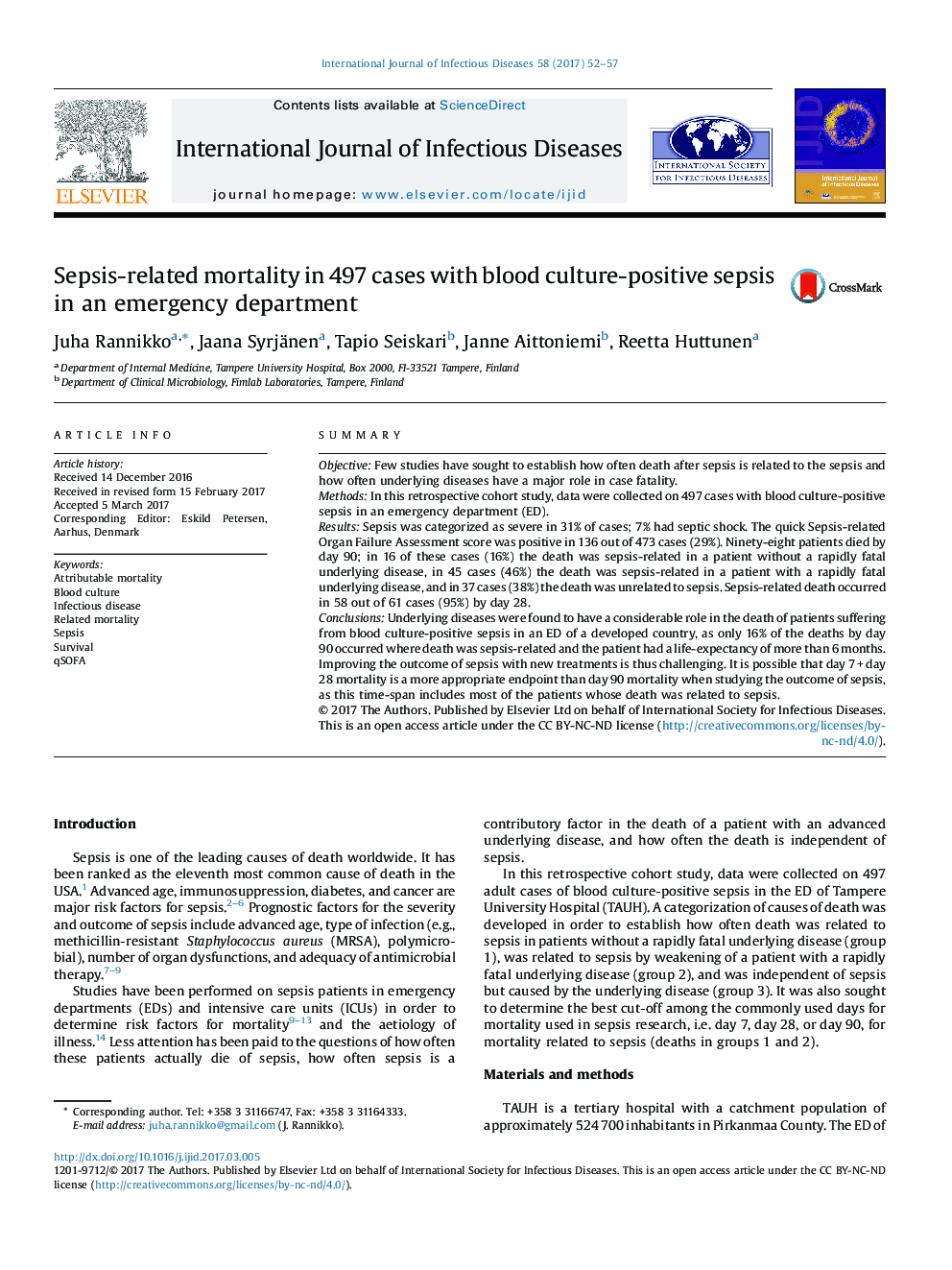| Article ID | Journal | Published Year | Pages | File Type |
|---|---|---|---|---|
| 5667537 | International Journal of Infectious Diseases | 2017 | 6 Pages |
â¢Only 16% of deaths by day 90 after culture-positive sepsis are related to sepsis in patients with a life-expectancy of more than 6 months.â¢95% of sepsis-related deaths occur by day 28.â¢Using day 90 as an endpoint in sepsis research includes mortality related to causes other than sepsis.
SummaryObjectiveFew studies have sought to establish how often death after sepsis is related to the sepsis and how often underlying diseases have a major role in case fatality.MethodsIn this retrospective cohort study, data were collected on 497 cases with blood culture-positive sepsis in an emergency department (ED).ResultsSepsis was categorized as severe in 31% of cases; 7% had septic shock. The quick Sepsis-related Organ Failure Assessment score was positive in 136 out of 473 cases (29%). Ninety-eight patients died by day 90; in 16 of these cases (16%) the death was sepsis-related in a patient without a rapidly fatal underlying disease, in 45 cases (46%) the death was sepsis-related in a patient with a rapidly fatal underlying disease, and in 37 cases (38%) the death was unrelated to sepsis. Sepsis-related death occurred in 58 out of 61 cases (95%) by day 28.ConclusionsUnderlying diseases were found to have a considerable role in the death of patients suffering from blood culture-positive sepsis in an ED of a developed country, as only 16% of the deaths by day 90 occurred where death was sepsis-related and the patient had a life-expectancy of more than 6 months. Improving the outcome of sepsis with new treatments is thus challenging. It is possible that day 7Â +Â day 28 mortality is a more appropriate endpoint than day 90 mortality when studying the outcome of sepsis, as this time-span includes most of the patients whose death was related to sepsis.
